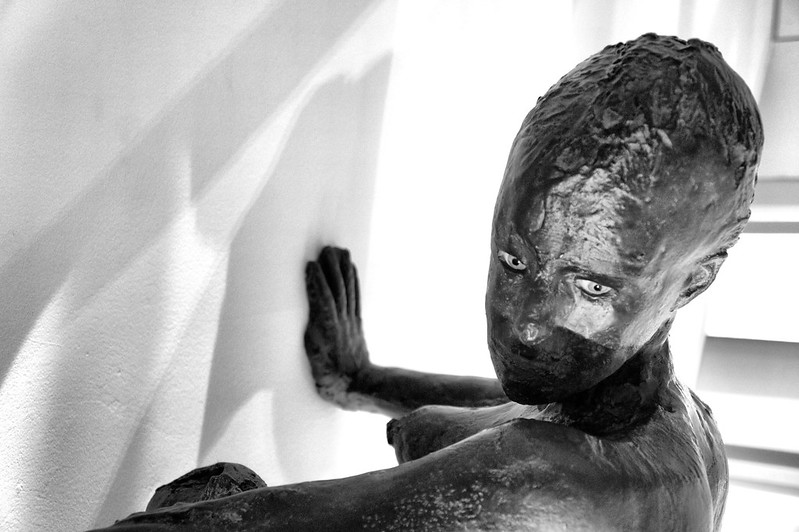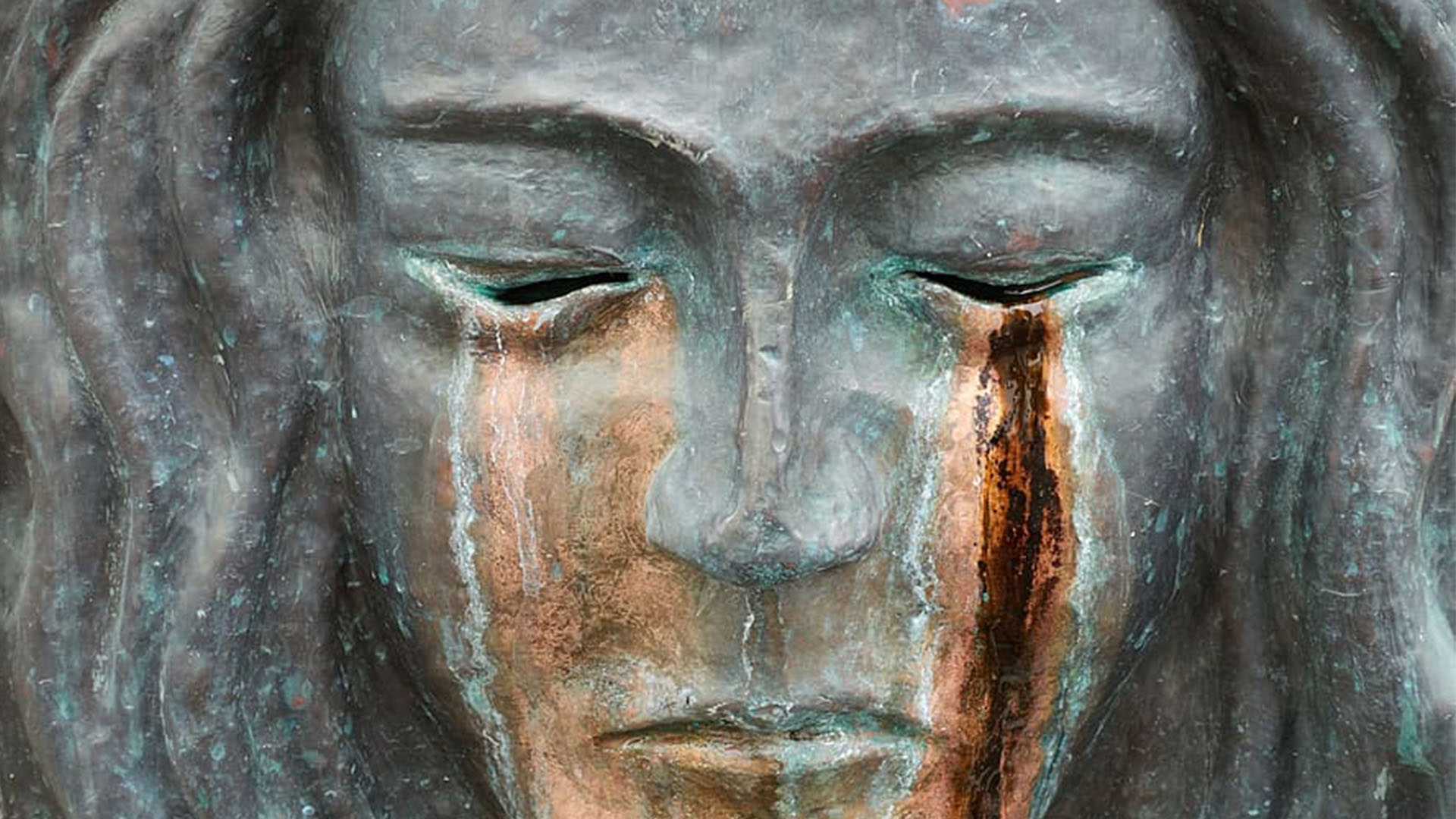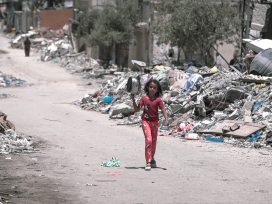In August 2018, Samira, a 20-year-old British Somali, found herself pacing outside a hospital in east London. Just a few hours earlier, she had taken an overdose and brought herself to hospital to seek help. Eventually she walked in. She was evaluated and it was determined that she needed to be admitted. Doctors gave her a limited choice: either come willingly or be sectioned. She went willingly, optimistic that she would recover.
Samira is a petite girl with a full-body laugh. When I first met her, it was hard to reconcile the instability she described with the cheerful person I saw before me. She told me that the background to her breakdown was years of untreated depression. Things came to a head while she was studying at university. On the surface, her life looked good. Samira was getting firsts in her exams and essays. She had a large and supportive friendship group.
She was also an activist on campus, and had been elected to a position in her student union which entailed a year of sabbatical leave on a full-time salary. It was a prestigious role. But in private, she struggled with the pressure, which continued to mount after winning the post. She put on an upbeat attitude, but inside she was reaching breaking point. ‘I was in so much pain,’ she told me.
On her first day of being hospitalised, Samira stood outside with another patient. The woman told her a joke often repeated around the ward: ‘Welcome to the NHS hotel, where you check in and never check out.’ That would soon apply to Samira’s own life. In the two years since her first admission, Samira has been in and out of psychiatric wards nine times, including being sectioned four times.
Life on the wards felt languid and oppressive. And there was one thing she noticed consistently: every ward she went to was filled with black people, just like her.
For decades, the overrepresentation of black people within Britain’s psychiatric system has confounded and concerned many within the medical field. ‘We’ve known about this for the past 60 years, and we’ve not been able to do anything effective,’ Craig Morgan, professor of social epidemiology at the Institute of Psychiatry, told me.
The figures are startling: admission rates into hospital for black and white-black mixed people are two to six times higher than the average. Research conducted for the ‘Count Me In’ census in 2013 indicated that black people are 29 per cent more likely to be forcibly restrained than white patients and 50 per cent more likely to be placed in seclusion and diagnosed as psychotic. Black men are particularly at risk: they are 17 times more likely than white counterparts to be diagnosed with a psychotic illness.
According to Morgan, this was first noted back in the 1960s. Members of the Afro-Caribbean population, who primarily migrated to Britain in the late 1940s and 50s, were recorded to have high rates of hospital admissions for schizophrenia. In every decade since, black patients have continued to appear in psychiatric wards in disproportionate numbers. To date, no one has found a definitive answer as to why this might be.
Over the years, different theories have been proposed by academics, social scientists and therapists. More recently, interest has been growing in the idea that collective historical trauma could play a key role – that the devastating impact of slavery, imperialism and oppression creates susceptibility to mental health conditions. Others point to the impact of socioeconomic factors, like poverty and discrimination. Still others emphasise the role of institutional racism, including discrimination within mental health services themselves. Samira’s story, one lone black experience amongst many, illuminates this complex web.
In 2000, Professor Robin Murray from the Institute of Psychiatry set out to investigate the high prevalence of schizophrenia in Afro-Caribbean people. While he didn’t identify anything genetic, his conclusion was poignant: ‘It seems to be something in the social environment, something about being black in Britain. The experience of black people in the UK almost drives them mad.’
Some practitioners suggest that navigating a predominantly white society as a black person can have a psychological impact, not least in the subconscious compulsion to assimilate. Many black people feel pressure to mimic white counterparts, or to suppress anger in order to appear unthreatening. ‘There is a need to simulate or copy white bodies – in terms of how they move, the tone of voice, the various expressions, eye contact,’ says Eugene Ellis, director of the UK’s Black, African and Asian Therapy Network. ‘And if you’re not that way, then you’re “other” and then you’re kind of excluded from society.’

Kiki Smith, Lilith, 1994, Bronze with glass eyes at The Metropolitan Museum of Art, Roy R. and Marie S. Neuberger Gift, 1996. Photo by Regan Vercruysse from Flickr
This rings true for Samira, who feels that the burden of her heritage might have contributed to her breakdown. ‘You have to try a lot harder because of the baggage you have to carry,’ she told me. Stigma within the Somali community about mental illness exacerbated her problems; the more unwell she became, the more friends she lost.
One theory about the overrepresentation of black people in the mental health system is that trauma can be passed on from one generation to the next – either spanning decades or centuries (transgenerational) or within a family or their descendants (intergenerational). There is some evidence in the field of epigenetics suggesting that trauma experienced by a particular group can affect communities on a cellular level, altering the DNA code that heightens the individual’s stress. In theory, these changes in gene expression make an individual more vulnerable to serious mental distress or conditions such as psychosis and schizophrenia.
In 2013, Clara Mucci, a psychoanalytically oriented psychotherapist practising in Italy, published a paper, ‘Beyond Individual and Collective Trauma’, which argued that massive social trauma such as war and genocide can have deep repercussions not only for the psyche of individuals who experience the trauma, but for their descendants. Since the 1960s, psychological research has been intermittently carried out exploring the idea that trauma could be passed on to the descendants of Holocaust survivors – either through second-hand exposure or genetically. Various studies examined the behaviour of the children of Holocaust survivors, often noting certain behaviours: some had markedly low self-esteem, while others suffered from night terrors, or from anxiety. They were often hypervigilant or had difficulty forming stable relationships. In some cases, the children felt as if their identity was intrinsically and irrevocably tied to pain wrought upon their parents. They struggled to establish a strong sense of self as a result.
Rachel Yehuda, director of the traumatic stress studies division at the Mount Sinai School of Medicine, brought the topic into the mainstream in 2014 with a study that found that children descended from Holocaust survivors had expressed some epigenetic changes; there was a higher level of cortisol. A higher prevalence of PTSD, mood and anxiety disorders was also noted. However, the study was too small to provide sufficient evidence of epigenetic inheritance. Yehuda only assessed 32 Holocaust survivors and 22 of their children. The paper concluded by calling for further study of the transmission of trauma and its link with gene expression, arguing that ‘continued research in this field will likely reveal that epigenetically induced changes are a reflection of environmental exposure, and therefore by definition malleable’.
The study attracted mainstream media attention, with its findings represented as fact. Articles in national newspapers have cited it to explain social phenomena such as an increase of suicides in Northern Ireland following the political conflict there. But Yehuda warned of the dangers of oversimplification. ‘Terms such as“inherited trauma” also obfuscate rather than clarify what is being transmitted and how’, she wrote in a follow-up paper on the public reception. ‘Indeed, how can an experience be inherited? Epigenetic marks must be explained as potentially enduring but also malleable, rather than as a permanent alteration to offspring DNA.’ While intergenerational trauma might provide some explanation for certain sets of behaviour or sensations, the legacies of the past do not necessarily predetermine the future. Perhaps trauma can be passed on, but its hold isn’t absolute.
Most studies of transgenerational trauma have focused on Holocaust survivors, with the theory rarely applied to black communities. ‘Somehow it gets edited out – slavery, colonisation – those experiences,’ says Eugene Ellis. In fact, the very existence of transgenerational trauma is hotly debated within the UK’s medical and psychiatric community. Robin Murray of the Institute of Psychiatry is a major influence in this field. When I asked his views, he told me bluntly: ‘I don’t believe in transgenerational trauma.’
Michael J. Halloran, an associate professor at the School of Social and Public Health at La Trobe University, Australia, spent years observing Aboriginal communities. He noted that despite numerous social enterprises and initiatives implemented by the government, these communities were still experiencing poor mental health, with a high prevalence of depression and alcoholism. Perturbed, Halloran wanted to work out why.
In 2018, the Journal of Black Studies published Halloran’s paper ‘African American Health and Posttraumatic Slave Syndrome: A Terror Management Theory Account’. His argument drew on terror management theory, a psychological theoretical framework that suggests humans create systems of meaning, cultural identity and values as a defence mechanism against their own mortality. When those systems are robust and cohesive, the individual is comforted, because they possess an established identity and obtain inherent value. In the case of African Americans, the dehumanisation of slavery destroyed those systems of meaning, resulting in a cultural trauma, ‘which was carried forward through successive generations,’ he wrote, ‘providing an explanation of their current anxiety-related conditions, poor health, and maladaptive behaviours’.
I asked Halloran how this might apply to black Britons, who are primarily composed of immigrants from Africa and the West Indies; regions ravaged by a long history of colonisation, genocide and slavery. He suggested that one issue might be the slow disintegration of the diaspora’s original cultural systems – something that most immigrant communities experience. Over time, with second and third generations, these values are gradually replaced. Halloran says that this kind of assimilation can be good for psychological stability if you are then accepted. But, he says: ‘That is not always the case.’
While young people in the second or third generation of an immigrant community may no longer experience the alienation of displacement felt by their parents or grandparents, they still experience marginalisation and racism. According to the Mental Health Foundation, unemployment rates are highest for people from a black background aged 16-24 – estimated at 26 per cent, compared with their white counterparts at 11 per cent. At school, a black Caribbean student is three times more likely to be excluded than a white child. And recent government data showed that between April 2018 and March 2019, in every 1,000 stop-and-search operations, four white people were stopped, compared with 38 black people.
It is not difficult to see how this type of oppression and social adversity could have a psychological impact. In addition to this, some black Britons are forced to straddle multiple identities and value systems, which can compound the pressure of experiencing day-to-day discrimination.
This was the case for Samira. Her mother, a nomad in Somalia, grew up herding camels. Her childhood involved responsibility: regardless of age, you were expected to support the family when you were called upon. She tried to pass those same values to her daughter, but life in the UK was different. In the eyes of British society, Samira was a child. ‘It was very disjointed and confusing,’ Samira told me. ‘I didn’t know why [my childhood] wasn’t going like other kids’.’
She struggled to reconcile these conflicting cultural norms. The confusion morphed into frustration. As a child, she often threw temper tantrums because she didn’t know how else to express herself. No one had taught her how to articulate emotional upheaval.
Later, Samira’s mother was diagnosed with lupus and she began using a wheelchair. Samira was forced to grow up very quickly. She found herself pushing her mother’s wheelchair into hospital appointments. A nurse commented on how great a responsibility rested on her. Samira rejected the idea: she was a grown-up, exactly like her mother had been in Somalia.
While a greater understanding of inter- and transgenerational trauma may encourage a more holistic approach to black mental health, there are also fundamental issues with the ways in which black patients are admitted into wards in the first place, often through coercion and detainment. According to Black Mental Health UK, black Britons are 50 per cent more likely to be referred to mental health services through interactions with the police than their white counterparts.
In spring 2019, seven months after her first stint on a psychiatric ward, Samira woke up in a hospital bed. She was disoriented, with only fragments of memory from the night before. She remembered drinking with her boyfriend and his friends; then nothing. A police officer hovered nearby. A nurse told her bluntly: ‘You’ve been raped.’
During a police interview, Samira was told she had been raped by her boyfriend. She denied that this had happened, but the officers had CCTV evidence. Confused and distressed, Samira went home – but 24 hours later, a policeman knocked on her door and told her that she was being sectioned because she was a danger to herself. They said she was going to attempt suicide, although she had not said anything to that effect. ‘I just remembered being quite confused, because when the rape happened, it hadn’t sunk in for me,’ she said. ‘I was in denial.’ She did not resist, just grabbed a small bag and got in the car. When the car pulled up back at the same hospital, the staff were at the entrance, ready for her arrival. Samira was kept in hospital overnight. She never found out how she got on their radar again; she assumed the officers had reported it. The next day, a psychiatrist who had monitored her on her previous stint decided that she should be allowed to go home. The doctor, whom she remembered as a kind person, apologised to her: ‘This is no reason for you to be sectioned.’ Samira left the hospital soon afterwards.
In ordinary circumstances, you can’t deprive someone of their liberty unless they have been convicted of a crime. But if three senior health professionals agree on it, sectioning means you can be forcibly admitted to hospital. Your freedom to dictate what can and cannot happen to your body is removed. Sectioning someone should be a last resort, a compulsory admission to hospital if you are too unwell to consent, or if you pose a risk to yourself or others – but it happens much more frequently to black patients than to any other group.
That black people are aggressive and violent is a common racist stereotype. Since the early 1990s that bias has been noted in the world of psychiatry – not just through excessive sectioning, but with the use of force on psychiatric wards. In a 2007 paper, Kwame McKenzie and Kamaldeep Bhui argued that racism influences the management and treatment of patients. ‘If you see these big differences between these groups: that parts of the population are in peril, that racialised groups of the population are in peril, and your system does nothing to rectify this,’ McKenzie said, ‘that is institutional’.
One night in November 2019, Samira was in a ward once again. Restless and frustrated, she raised her foot and slammed against the door with everything she had. It didn’t budge. But the staff took action. In the next moment, she felt the force of someone grabbing her. She was pinned down. The body’s natural response to being forcibly held is to try and break free. It only encouraged the staff to tighten their hold. In that moment, Samira felt that she was seen as something else – not a person, pressed painfully against the hard mattress of her bed, whose limbs started to throb under the sharp pressure. She was an aggressor, despite having no history of violence. One of the nurses intervened. ‘No one wants to be held like that,’ she told her colleagues. When they let go, Samira calmed down immediately. They were surprised.
As she went cyclically in and out of wards, Samira felt she was getting worse, with frequent misdiagnosis and heavy drug treatments. She felt as if her mental health issues were at the centre of who she was. Year after year, she would return, unable to move forward and leave the confines of the NHS hotel behind. It felt like containment, she told me, not treatment.
The question of why black people are overrepresented in the British mental health system cannot be answered with any single reason. Inherited trauma could play a powerful part, but so do cultural disconnection, racism and poverty.
Samira is Somali. The ongoing civil war – a conflict that has ravaged the country’s economy and displaced more than 2 million citizens over the course of 30 years – has cast a long shadow over her family and community.
Could a family background of war and displacement have impacted Samira’s later mental health problems? It’s difficult to unpick this from other factors. In Britain, the Somali community is among the most deprived and marginalized. Figures from 2013 showed that just one in ten was in full-time work. Samira grew up being told that she had to excel in school so that she could one day help her family back in Somalia. But she believes that the foundations for her depression were laid not only by her background of displacement, but by a period of intense family upheaval that started when she was nine. Her father abruptly left and never came back; her older brother was arrested and sent to jail. Her mother was unable to take care of her remaining six children without help and, in the midst of the chaos, they lost their home. During the upheaval, for six months, Samira was out of school.
As with any mental health issue, Samira’s problems have complex roots: her community’s history, her family background and her personal experiences may all have played a part, and this may have been compounded by sometimes harsh treatment within the mental health system.
Halloran, the Australian researcher, emphasizes how important psychiatry is in the treatment of mental health problems, but points out that it is strictly focused on ‘individual explanations for individual problems’. For communities with a long-standing history embedded in social trauma, context might be necessary. Aileen Alleyne is a London-based psychotherapist who has conducted extensive research on the effects of historical trauma, racism and oppression on black communities in the UK. She stressed the need for increasing awareness by reading beyond the literature on black individuals and communities to that of other diasporas and their histories of trauma, reframing the harmful, negative stereotypes imposed on black people.
Kwame McKenzie, professor of psychiatry at the University of Toronto and co-author of the 2007 study on institutional racism, explained that the best treatments recognize the plethora of contributing factors that caused the illness in the first place. Understanding and accepting the historical background of black people in Britain is just one component in combating the risks posed to their mental health.‘[The idea that] one size fits all is not right, we have to tailor our treatment to the needs of people,’ he said. ‘We have to think about how we get people to the point of peace. Because we don’t get people to the point of peace by ignoring their past, their present and their future.’
The last time I saw Samira, she was receiving treatment at a women’s crisis centre, its conditions a stark contrast to the wards that she disliked so much. She hopes to go back to university and one day open a women’s centre for rape survivors in Somalia. It’s a good reason to live. She told me that, in time, the traumas of the past will be nothing more than a backstory.








